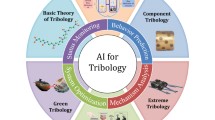Abstract
Nowadays applying condition-based maintenance technology for detecting the states of machines or components could be anticipated, when the diagnostic and prognostic algorithms are successfully introduced. In particular, for those enduring components like rolling bearings with relative long service life and complex states of development, such like sudden collapse caused by pitting, the diagnosis process is essential for identifying damages and by that way reducing unnecessary costs in many fields of manufacturing industry. This paper presents an improved approach to clarify the defect states of rolling bearings by using optimized clustering method. The simulated annealing k-means algorithm is proposed, which is used to remove isolated noising data points from the main distribution. In addition, of acquiring optimized assignments, and to predict the degradation by setting up hidden Markov model that carries out the diagnosis characteristics. Experiment reveals the correlation between the defect periods and the area of corrosion pits The results are presented to verify the efficiency and effectivity of the approach.














Similar content being viewed by others
References
K. Javed, R. Gouriveau, N. Zerhouni, Enabling health monitoring approach based on vibration data for accurate prognostics. IEEE Trans. Ind. Electron. 61(1), 647–656 (2015)
O. Ondel, E. Boutleux, E. Blanco, Coupling pattern recognition with state estimation using Kalman filter for fault diagnosis. IEEE Trans. Ind. Electron. 59(11), 4293–4300 (2012)
P. Baruah, R.B. Chinnam, HMMs for diagnostics and prognostics in machining processes. Int. J. Prod. Res. 6(43), 1275–1293 (2004)
T. Ueda, K. Ueda, N. Mitamura, Unique fatigue failure of spherical roller bearings and life-enhancing measures, in Proceedings of WTC2005, World Tribology Congress III, 2015(9)
T. Ueda, N. Mitamura, Mechanism of dent initiated flaking and bearing life enhancement technology under contaminated lubrication condition. Part II: effect of rolling element surface roughness on flaking resulting from dents, and life enhancement technology of rolling bearings under contaminated lubrication condition. Tribol. Int. 12, 1832–1837 (2009)
W.T. Becker, R.J. Shipley, ASM Handbook Volume 11: Failure Analysis and Prevention (ASM International, Ohio, 2002)
P.J. Blau, O. Ridge, ASM Handbook Volume 18: Friction, Lubrication, and Wear Technology (ASM International, Ohio, 1992)
Idriss El-Thalji, Erkki Jantunen, A descriptive model of wear evolution in rolling bearings. Eng. Fail. Anal. 10(45), 204–224 (2014)
W. Guo, H. Cao, Z. He, L. Yang, Fatigue life analysis of rolling bearings based on quasistatic modeling. Shock Vib. 8 (2015). Article ID 982350
A.M. Khorasani, G. Littlefair, M. Goldberg, Time domain vibration signal processing on milling process for chattar detection. J. Mach. Form. Technol. 6, 45–64 (2014)
S.N. Sulaiman, N.A.M. Isa, Adaptive fuzzy-K-means clustering algorithm for image segmentation. IEEE Trans. Consum. Electron. 19(1), 2661–2668 (2010)
B.S. Everitt, S. Landau, M. Leese, Cluster Analysis, 5th edn. (Wiley, New York, 2010)
T.J. Amin, E.M. Joo, X. Li, B.S. Lim, Sequential fuzzy clustering based dynamic fuzzy neural network for fault diagnosis and prognosis. Neurocomputing 196(6), 31–41 (2016)
Y. Ding, X. Fu, Kernel-based fuzzy c-means clustering algorithm based on genetic algorithm. Neurocomputing 5(188), 233–238 (2015)
A. Soualhi, H. Razik, G. Clerc, D.D. Doan, Prognosis of bearing failures using hidden Markov models and the adaptive neuro-fuzzy inference system. IEEE Trans. Ind. Electron. 61(6), 2864–2874 (2014)
M. Yuwono, Y. Qin, J. Zhou, Y. Guo, B.G. Celler, S.W. Su, Automatic bearing fault diagnosis using particle swarm clustering and Hidden Markov Model. Eng. Appl. Artif. Intell. 47(1), 88–100 (2015)
S. Ntalampiras, Y. Soupionis, G. Giannopoulos, A fault diagnosis system for interdependent critical infrastructures based on HMMs. Reliab. Eng. Syst. Saf. 6(138), 73–81 (2015)
H.M. Ertunc, K.A. Loparo, H. Ocak, Tool wear condition monitoring in drilling operations using hidden Markov models (HMMs). Int. J. Mach. Tools Manuf 9(41), 1363–1384 (2001)
Q. Li, T. Zhao, L. Zhang, Mechanical fault diagnostics of onload tap changer within power transformers based on Hidden Markov Model. IEEE Trans. Power Deliv. 4(27), 596–601 (2012)
S. Mahmoodpour, M. Masihi, An improved simulated annealing algorithm in fracture network modeling. J. Nat. Gas Sci. Eng. 7(33), 538–550 (2016)
N.G. Nikolaou, I.A. Antoniadis, Rolling element bearing fault diagnosis using wavelet packets. NDT&E Int. 4(35), 197–205 (2002)
F. Zhou, J. Park, Y. Liu, Differential feature based hierarchical PCA fault detection method for dynamic fault. Neurocomputing 8(202), 27–35 (2016)
Acknowledgment
This work is partly supported by Natural Science Foundation of China (Grant No. 71471139) and Zhejiang Natural Science Foundation, China (Grant No. LY14E050020).
Author information
Authors and Affiliations
Corresponding author
Rights and permissions
About this article
Cite this article
Gao, Y., Xie, N., Hu, K. et al. An Optimized Clustering Approach Using Simulated Annealing Algorithm with HMM Coordination for Rolling Elements Bearings’ Diagnosis. J Fail. Anal. and Preven. 17, 602–619 (2017). https://doi.org/10.1007/s11668-017-0278-3
Received:
Revised:
Published:
Issue Date:
DOI: https://doi.org/10.1007/s11668-017-0278-3




